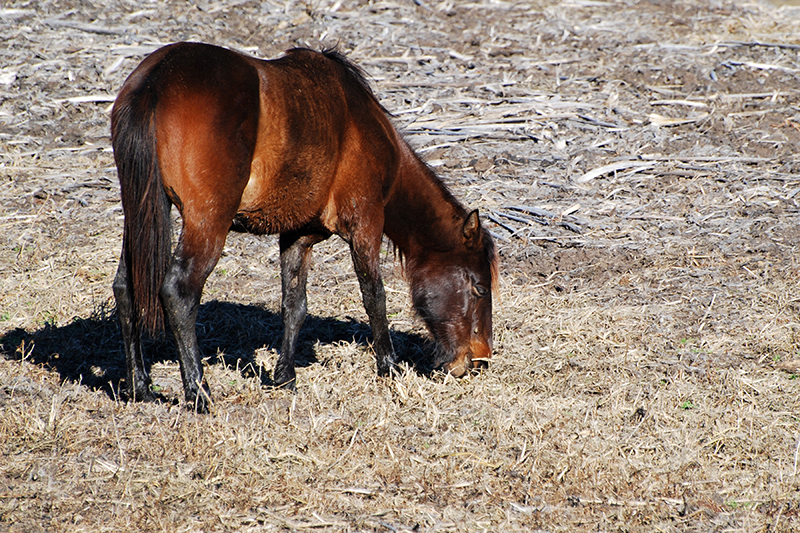Florida Cracker Horses
Also known as: Chickasaw Pony, Seminole Pony, Marsh Tackie, Prairie Pony, Florida Horse, Florida Cow Pony, and Grass Gut
Origin
Like the Florida Cracker breed of cattle, this horse breed derives from  Spanish stock brought to Florida in the 1500s. When the Spanish conquistadors returned
to Spain, they left some of their cattle, horses, and swine in America, preferring
to use the extra room for their American gains.
Spanish stock brought to Florida in the 1500s. When the Spanish conquistadors returned
to Spain, they left some of their cattle, horses, and swine in America, preferring
to use the extra room for their American gains.
The genetics of the Florida Cracker breed come from the Iberian horse of the early 16th century Spain, and includes blood from the North African Barb, Spanish Sorraia, and the Spanish Jennet. These horses also contributed to the Spanish Mustang, Paso Fino, Peruvian Paso, and Criolla breeds, so the Florida Cracker's genetic base is very similar to theirs.
These horses were used by Florida cowmen, termed "Crackers" from the sound of cow whips cracking, and the name stuck to the horses as well.
However, in the 1930s, the Great Depression affected the Florida Cracker breed as severely as it affected most things. Many cattle needed to be transported into Florida to escape the Dust Bowl, but they brought with them the screwworm fly. This new parasite created new challenges in cattle management, and the cattle now required new fencing and dipping vats. The Florida Cracker horse was too small and too weak to meet the cowmen's new needs, and instead, they turned to the Quarter Horse to rope and hold cattle for the screwworm treatment. Demand for the Florida Cracker Horse fell, and they became a rarity.
A few families continued the breed, raising them for their own ranches and inadvertently keeping the breed from extinction. These families were the Ayers, Harvey, Bronson, Matchett, Partin, and Whaley families. In 1989, the Florida Cracker Horse Association was formed to search for the remaining Florida Cracker horses.
In May of 2008, Florida lawmakers voted the Florida Cracker Horse Florida's official horse.
Characteristics
These horses are small, saddle suited, at 13.2 to 15.2 hands at the withers, and weighing 700-1000 lbs. They can be any color, although solid colors, namely gray, are most prevalent. Their gaits cover ground well, including the flat-footed walk, running walk, trot, and ambling gait. These are possible with no special shoeing, and often, even barefooted.
They do not share the crested appearance of the neck associated with some Spanish breeds, instead being fairly narrow and having the same length as the withers-to-croup distance.
References
Florida Cracker Horse Association
Karen Prell, "The Florida Cracker Horse"
